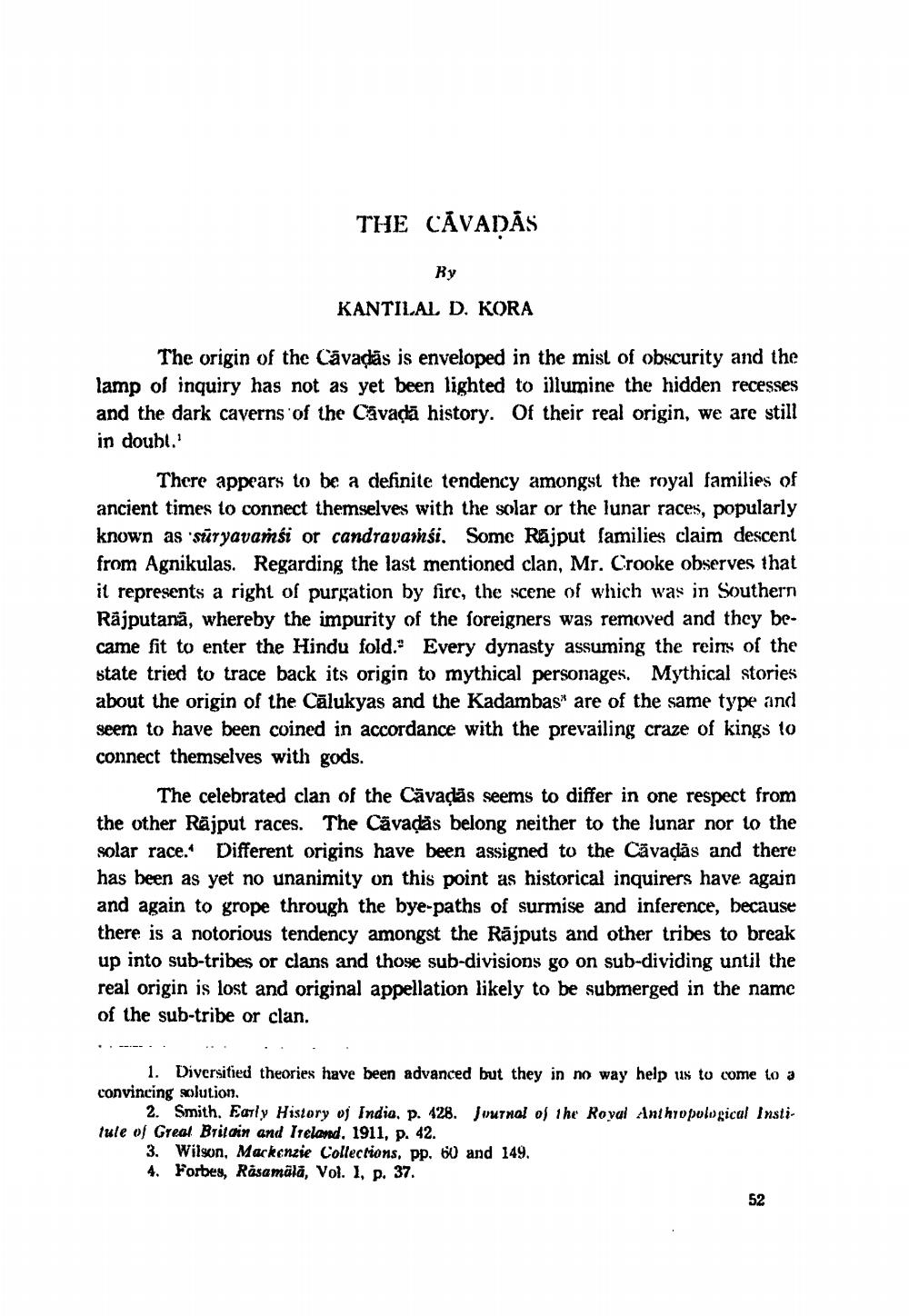________________
THE CAVADĀS
By
KANTILAL D. KORA
The origin of the Cavaḍās is enveloped in the mist of obscurity and the lamp of inquiry has not as yet been lighted to illumine the hidden recesses and the dark caverns of the Cavada history. Of their real origin, we are still in doubt.'
There appears to be a definite tendency amongst the royal families of ancient times to connect themselves with the solar or the lunar races, popularly known as sūryavaṁśi or candravaṁśi. Some Rajput families claim descent from Agnikulas. Regarding the last mentioned clan, Mr. Crooke observes that it represents a right of purgation by fire, the scene of which was in Southern Rajputana, whereby the impurity of the foreigners was removed and they became fit to enter the Hindu fold. Every dynasty assuming the reins of the state tried to trace back its origin to mythical personages. Mythical stories about the origin of the Calukyas and the Kadambas" are of the same type and seem to have been coined in accordance with the prevailing craze of kings to connect themselves with gods.
The celebrated clan of the Cavaḍās seems to differ in one respect from the other Rajput races. The Cavaḍās belong neither to the lunar nor to the solar race.^ Different origins have been assigned to the Cavadas and there has been as yet no unanimity on this point as historical inquirers have again and again to grope through the bye-paths of surmise and inference, because there is a notorious tendency amongst the Rajputs and other tribes to break up into sub-tribes or clans and those sub-divisions go on sub-dividing until the real origin is lost and original appellation likely to be submerged in the name of the sub-tribe or clan.
1. Diversified theories have been advanced but they in no way help us to come to a convincing solution.
2. Smith. Early History of India, p. 428. Journal of the Royal Anthropological Institule of Great Britain and Ireland. 1911, p. 42.
3. Wilson, Mackenzie Collections, pp. 60 and 149.
4. Forbes, Rasamälä, Vol. 1, p. 37.
52




